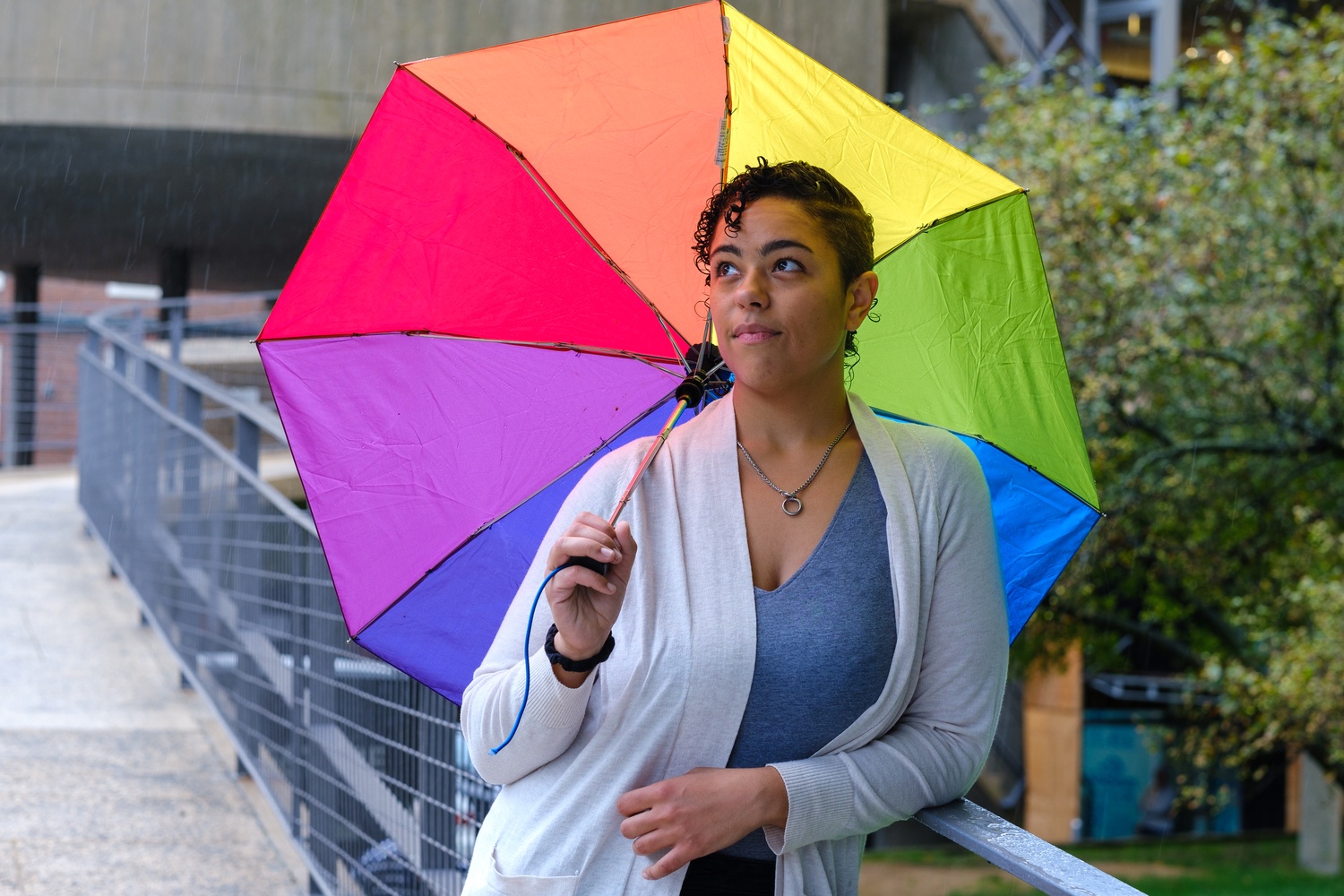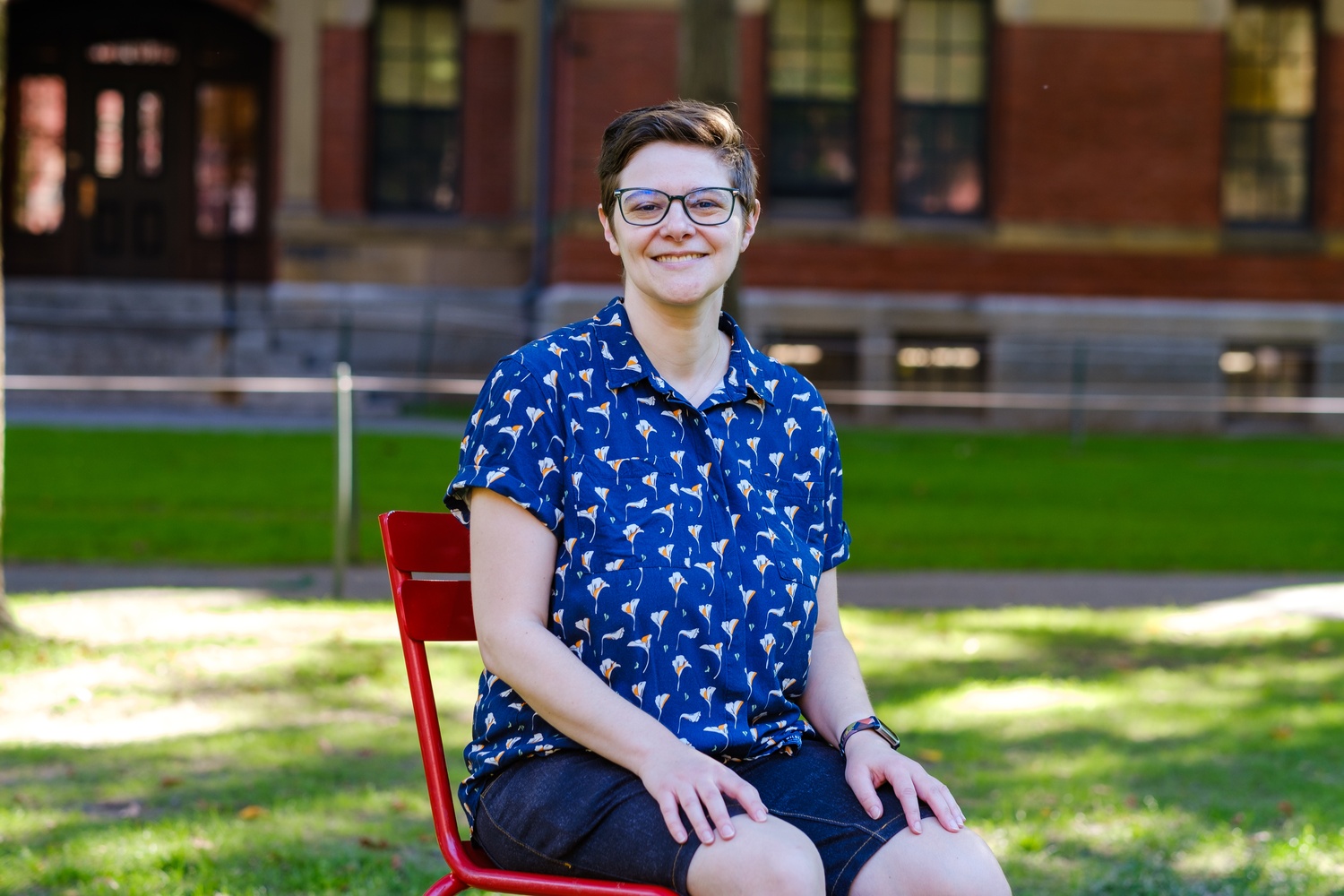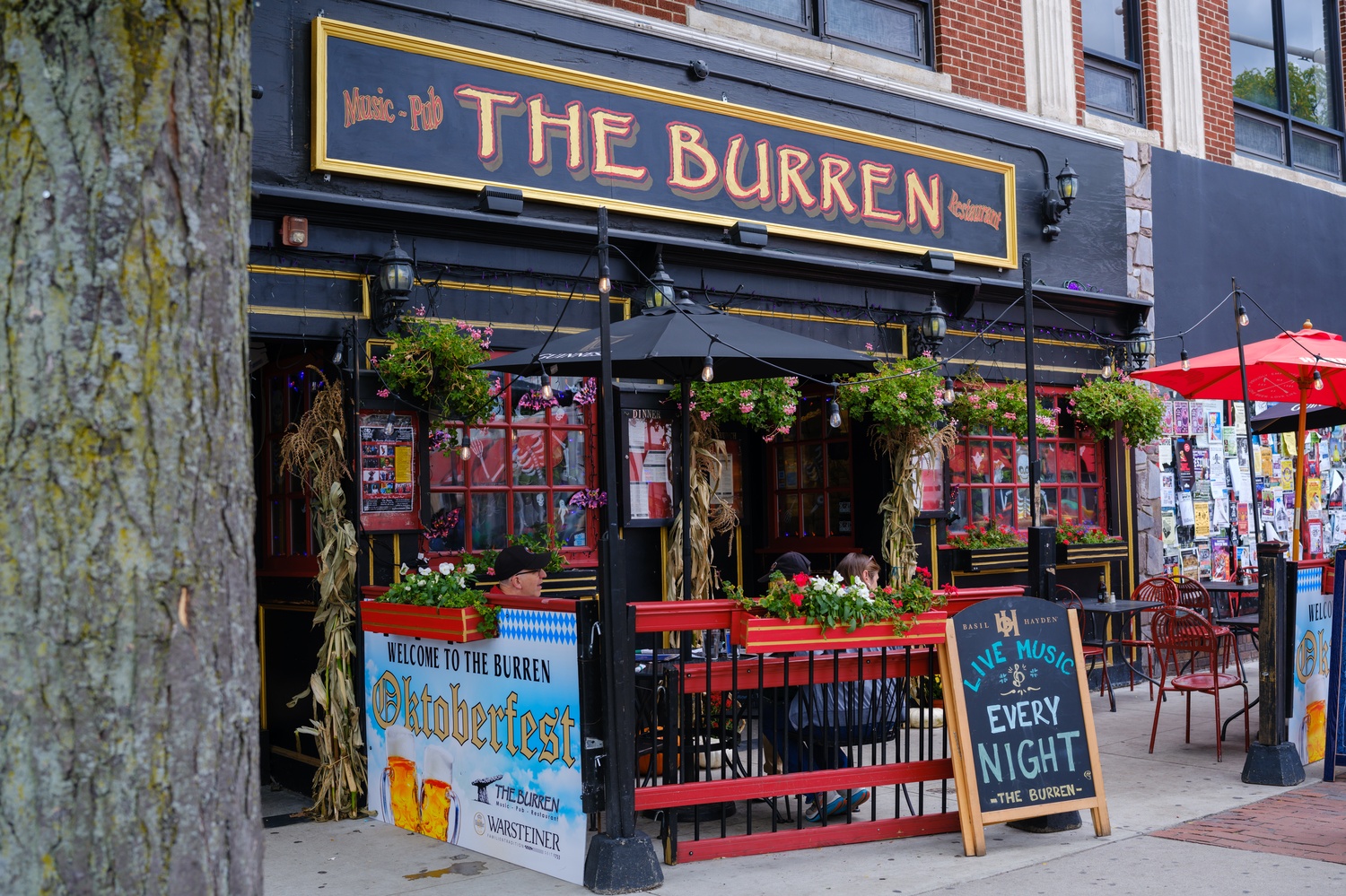Love and the Law: A Look at Polyamorous Camberville
In 2020, 11 Somerville city councilors drafted an ordinance for domestic partnerships, previously nonexistent in the municipal code. As they were finalizing the legislation that would define domestic partnerships between two people, city councilor J.T. Scott asked a modest but far-reaching question: why only two?Five years ago, longtime Somerville resident Suzanne was writing more thank you letters than usual, and to a surprising recipient: the City Council. Suzanne was undoubtedly prepared for this moment — they already had a polyamorous pride flag outside of their home in Somerville, one of the nation’s most LGBT-friendly cities.
The Somerville government had just passed an ordinance that made national headlines: this was the first time that any U.S. city had redefined the bounds of a domestic partnership — a legal arrangement that allows partners to formalize their relationship – to “entity formed by people.”
“It just makes it feel like it’s a community that sees and supports who I am,” Suzanne said.
A small town nestled between Cambridge and Medford with 81,000 residents, Somerville has long been a safe space for creatives, immigrants, members of the queer community, and people of color.
Under this 2020 change, the term “family” is now interpreted to include domestic partnerships when used in other city ordinances. Somerville then passed another ordinance in 2023 that expanded policing and housing discrimination laws to protect family and relationship status — amendments made with polyamorous domestic unions in mind.
Like Suzanne, many of our interviewees noted an atmosphere of excitement as the legislation was being established. Others expressed personal pride that their city was the first place in the U.S. to protect polyamorous practice. Still others characterized the legislation as “mostly placating” or “mostly symbolic.”
These ordinances also resulted in an onslaught of media coverage — much of which focused on the sexual logistics of large polycules — that promoted a sensationalized view of Somerville’s polyamory community.
In April 2024, The New York Times Magazine published a feature called “Lessons From a 20-Person Polycule” which explored the dynamics between a married couple, partners, and partners of partners in a Boston-area polycule. This article, similar to other media coverage about polyamory, included intimate shots of intertwined hands, multi-person embraces, and close-ups of skin-to-skin contact.
Our conversations with 10 polyamorous residents in Cambridge and Somerville revealed a more nuanced picture. They acknowledged the recognition the ordinances afford them, and saw the legislation as a reflection of their community’s underlying values. The practice and legalization of polyamory, then, was a way to understand the complex relationships and ways people, laws, and social customs interacted. Still, these individuals continue to navigate complex relationship dynamics, media-perpetuated stereotypes, and mixed reactions to the ordinance itself.
Seated at a diner-style table, Haley J. Slavick leaned over pepper and salt shakers to speak above the buzz of a matchmaking event in 2022. Slavick was at a non-monogamous speed dating night at Trident Booksellers & Cafe, a frequent gathering place for Boston locals looking for love. It was a warm summer evening, and Boston was coming alive again following the pandemic.
As the night went on, Slavick frequently turned around to listen to a laugh — loud enough that it reminded her of her own. “My laugh is really loud, so I tend to really go for people that have that same laugh,” she says.
When she finally sat down in front of the source — a man dressed in a light blue button-up with a green scarf — she could hardly contain herself. “I’m so glad I got to talk to you, this is so great!” she told him. “And he was just like, okay. Hi. Nice to meet you.”

Slavick learned his name was Anthony C. Byrne, and the two hit it off immediately. They stayed in their seats 20 minutes past the end of the event, sharing their respective love lives: she had been non-monogamous since she was 18, and he was nine months into practicing polyamory. Byrne had just broken up with a long-term partner, and Slavick was preparing to get married to her long-term girlfriend.
Because Bryne was still fairly new to this form of relationship, he had researched extensively to understand the intricacies of polyamory. “Anthony’s probably read more books about polyamory than I have. He had all of the terms. He seemed really well-versed,” she recalls.
For Slavick, one of the tricky parts of polyamory — especially with marriage involved — is navigating its legal and social implications. Unlike her budding romantic relationship with Bryne, Slavick’s marriage meant that her partnership would be legally recognized by the government. Marriage confers a number of benefits, including shared health insurance, spousal Social Security, Medicare, joint tax returns, rights to property, and the necessary protections if a couple decides to separate.
But for Sam Jones, who practices polyamory, marriage emphasizes the “monogamous mindset,” setting expectations for the traditional steps of partnership: marriage, cohabitation, and then family. For some, polyamory offers an alternative.
Coined in the 1990s, the term ‘polyamory’ defines relationships outside the bounds of the institution of marriage — two-person unions sanctioned by the state.
More specifically, polyamory is the practice of maintaining concurrent romantic and or sexual relationships. It fits under the larger umbrella of consensual non-monogamy — which includes open relationships, swinging, friends with benefits, among others. Many of our interviewees also commented on how bringing intentionality and communication to polyamory informs how they approach other relationships — learning to equally prioritize friends, family, and siblings as they do romantic partners.
To make sense of the multitude of polyamorous dynamics, members of the community (like Byrne) point to an unofficial polyamorous syllabus, including “Polysecure” by Jessica Fern, “The Ethical Slut” by Janet W. Hardy and Dossie Easton, and “Stepping off the Relationship Escalator” by Amy Gahran.
“You have to be a relationship nerd if you want to be properly poly,” says Audrey O. Routt, who practices polyamory.
Even though the polyamorous community seems deeply invested in defining itself through literature, polyamory is more accessible and prevalent than one might think. A 2021 research study drawing from the United States Census found that 10.7 percent of Americans have engaged in polyamory, while a 2017 study found that over 20 percent of Americans have engaged in consensual non-monogamy.
Still, non-monogamy remains largely socially unacceptable: in a survey of over 3,000 American adults, just one in seven participants indicated that they respect people who are polyamorous.
“I certainly do see more and more people being open about their non-monogamous identity,” says Brett Chamberlin, the executive director of the Organization for Polyamory and Ethical Non-Monogamy.
“You’re seeing more celebrities and public figures opening up. You’re seeing elected officials being relatively open about their non-monogamous identity, which I think would have been quite unthinkable, frankly, even 10 years ago,” he adds.
We speak with Jones over a series of online Zoom meetings. Each time we meet, his hair and beard are impeccably combed, and he’s migrated to a different room in his Somerville apartment.
Jones grew up in Melrose, often escaping to Cambridge and Somerville on the Red Line. The almost hour-long commute — 25 minutes on the Orange line and another 28 on the Red line — was always worth it.
“There was culture there that I felt like I could get into, in a way that there just wasn’t in Melrose,” he says.
After exiting the train, he would head straight for the comic and anime bookstores, spending another few hours immersed in a world of graphic art and superheroes. X-Men was one of his favorite stories — even then, Jones felt particularly drawn to Cyclops, Jean Grey, and Wolverine, who had long been entangled in a love triangle teased by the Marvel creators. To many in the fandom, this three-person relationship looked like polyamory.
Off the page, Jones was already seeing polyamory in action. Dinners at his childhood best friend’s home were crowded — his friend’s parents hosted their partners for meals each night. “It became very normalized for me,” he says.
“There were a bunch of adults around who knew my friend and cared about him and his siblings,” Jones says.
His experience is not unique in the context of Camberville’s poly-friendly neighborhood. “Everyone on the City Council knows someone who is polyamorous. This is Somerville,” J.T. Scott, a Somerville city councilor, says.
Scott was among the city council members responsible for drafting the 2020 ordinance. During the height of the COVID-19 pandemic, he heard the same complaint from his constituents again and again: people were unable to visit their sick partners in the hospital. Residents asked city councilors for ways to expand hospital visitation rights, allowing partners who weren’t married to visit one another.
Together, the 11 city councilors drafted an ordinance for domestic partnerships, previously nonexistent in the municipal code. As they were finalizing the legislation that would define domestic partnerships between two people, Scott asked a modest but far-reaching question: why only two?
This question led the city council to expand the definition of domestic partnership to “between people” rather than “between two people.” The one-word deletion and intentionally vague language allowed the ordinance to cover a number of communities without specifying terms like “polyamory” or “consensual nonmonogamy.”
In addition to this small change, the councilors wrote in the 2020 ordinance that “persons in domestic partnerships have all the same rights and privileges afforded to those who are married, except to the extent that doing so would conflict with federal or state law.”
In Somerville, people can register for a domestic partnership through a form on the city’s website. After meeting with the designee of the city clerk’s office and providing a government issued photo-ID, the partners can then pay a $50 check to confirm their partnership.
Since 2020, there have been 487 domestic partnerships in Somerville, 22 of which are multi-member.
As an organizer for the polyamorous community, Chamberlin sees the Somerville ordinance as “a call to action for other cities.” Cambridge and Arlington followed suit a few months later, passing ordinances that defined domestic partnerships as “two or more persons.” Oakland and Berkeley also now recognize and protect the rights of polyamorous people.
For legislators, lawyers, and advocates involved in the drafting of the ordinance, its passing — a unanimous vote in the city council —was a testament of Somerville’s commitment to its residents and the national polyamorous community’s ability to mobilize. The city councilors received legal and media support from the LGBTQ+ Advocacy Clinic at Harvard Law School, Polyamory Legal Advocacy Coalition, and OPEN.
Suzanne, too, notes how involved the Camberville community seems to be in its local politics. “As the wider political spectrum gets more and more challenging, focusing on the local is a good strategy,” she says. “It’s something you can affect in a much more tangible way.”

For Willie J. Burnley Jr. , who wasn’t on the city council in 2020, the ordinance was an incredibly exciting and personal moment. “We’re actually moving forward as a society, and there’s a place that actually sees us and respects us and wants to celebrate us enough that they made room legally for our relationships,” he says.
Three years after the 2020 ordinance, the city council passed another series of bills defining “family or relationship structure” as a protected class, akin to race, gender, or sexual orientation. The ordinances also extended specific anti-discrimination protections in police interactions, employment, and housing.
These additions, Burnley says, have legal implications beyond polyamorous unions. They also apply to families that look different than the nuclear family of two parents and two children — intergenerational families, adults taking care of an elderly parent, and more.
“The point was that the government should not be discriminating against people based on the shape and contours of their family,” Burnley adds.
Towards the end of our interview with Scott, he poses a question about media coverage on polyamory: “It’s been covered a lot of places in a lot of ways. I’m curious, why now?”
Chelsea R. Martinez, who recently moved to the area, says that focusing on polyamory and the Somerville ordinances detracts from other, more pressing issues. “If one thing is clear, it’s that existing rights are not being protected,” she says. To her, there are currently bigger issues at stake: ICE camp-outs in Camberville, infringements on academic freedom, and housing affordability.
“Arguing for rights for a very small and relatively privileged group of people who already have more rights than most people — I just don’t think that’s interesting,” she adds.
Slavick writes to us that she has become more hesitant of government intervention in her relationships. She’s currently in a divorce after 11 years of partnership and has found the process difficult. “I can’t imagine having to do so more than once.”
From his position as a city councilor, Burnley says that if governments are at all involved with legitimizing relationships, then they cannot be removed from defining them. “As long as we are in that business, I’m of the strong belief that government should be working to celebrate people’s relationships,” he says.
The very promise of the ordinance stands as a hopeful possibility for residents, some of whom never thought it possible to see their relationships acknowledged by their government.
As Burnley clarifies, the legislation was established by and for a small community in search of safety and support. It was a local movement in Camberville’s diverse neighborhoods that “really spurred this along,” he says. The kick came from individuals and families.
When we ask Scott to explain the relationship between legislation, identity, and labeling — trying to solidify connections between layers of analysis — he stops us in our tracks. To him, this story is simple: “This costs communities nothing. To recognize the dignity and existence of our neighbors costs us nothing.”
When Suzanne told their parents they were polyamorous, they had to field a number of intrusive questions.
“I don’t think my folks really knew about polyamory as an option,” they admit, shrugging. Their parents launched a series of well-meaning queries about their sexual health and partners. Realizing that the mechanics of polyamory were too complex to articulate over a series of phone calls, Suzanne resolved to compile a 101 guide, an FAQ page, and supplemental reading into a succinct email.
Suzanne, a local photographer, moved to Somerville for college over 15 years ago. Seeing polyamory all around them “as a possible option” led Suzanne and their partner to explore it. “I’ve never actually been in a long-term monogamous relationship,” they told us.
While Suzanne and their first polyamorous partner separated romantically over time, they still live near each other. “Having room for that type of shift, and still being able to be important people in each other’s lives has been really lovely,” they say.
It’s a common theme for Suzanne, who prioritizes building a strong network around themselves. “I like to create a web around me to support me, whether that’s romantic or platonic or family,” they say. “I just need support. Not even emotional support, just people-in-my-life support.”
Suzanne’s romantic web has changed over time from “kitchen table” (all partners are connected enough to share a meal around a kitchen table) to “parallel” (no overlap in multiple relationships) to “garden party” (members of a network are familiar with, but not close to partners’ partners).
Suzanne’s embrace of polyamorous lingo is not unique — many of our interviewees employ the same vocabulary to describe their love lives.
Burnley notes that, along with providing legal protections, labels are part of what it means to build safety and belonging for any community: “we build out language in order to give ourselves a home and make ourselves feel comfortable with the things that are happening to us, around us, with us.”
If polyamorous language is a home the group has constructed for themselves, Camberville resident Sarah K. Biddle certainly resides in it.
In the rather noisy warmth of The Burren — the unofficial heart of Somerville’s social life — Biddle and their partner Routt have managed to stake out a spot for themselves near the stage. The banjos are loud, and the sound of fiddles weave in and out the conversation.
Even as the music swells, Biddle and Routt maintain a level sound and speaking pace. Biddle begins their story in a sharp Australo-Dutch accent, picked up while moving between countries for their work as an astronomer.

Biddle and Routt met through a Boston Queer Poly Women’s group meet-up, where they discovered their shared love for lists. Two months into dating, they were already ¾ finished with an exhaustive “Relationship Checklist.”
We experienced this love of listing first-hand in the obligatory explanation of who was partnered with who, and how. Biddle has two other partners, one in the Netherlands and one in Australia.
There are a couple others on the list that aren’t precisely partners. Routt was looking to “re-escalate” a former romantic partnership, and Biddle adds that they have more casual relationships they intend to “de-escalate.” These continual acts of redefinition seem key to Biddle and Routt’s experiences of polyamory.
For Routt, clear vocabulary allows her to put a word to a feeling. “I really like labels. I really like when I have a label that well defines how I feel about the relationship,” she says.
Together, Biddle and Routt explain these labels, using escalators, gardens, and kitchen tables to build their world. The “home” of polyamorous vocabulary helps with understanding occasionally complicated dynamics — words are the wooden framing that gives polyamory shape.
Martinez moved to the Camberville area two years ago, after working at biotech companies in California, Texas, and Pennsylvania. For Martinez, the most important part of moving to a new city was finding community.
From the onset, she threw herself into Camberville life, participating in local activism, visiting film archives, and starting up hobbies like printmaking and dance. On her dating app profiles, she specified that she was looking for a polyamorous relationship.
While polyamory lends many of its practitioners a new way of thinking about love and partnership, like every kind of relationship, there are stumbles and mishaps.
When Martinez went on her first date in Boston, she quickly realized that the person sitting across from her did not want to be there. “It was very clear that they had really been pushed to go date so that it would make the other person’s dating okay,” she says.
Chamberlin says that using polyamory as a mask for disloyalty often reflects an issue in the relationship itself. “People sometimes argue that non-monogamy creates more space for cheating,” he says. “I think that that’s a bit of a red herring. In that case, the issue is not really with polyamory or non-monogamy, it’s with the person that’s committing infidelity.”
Others, like “Polysecure” author Jessica Fern, note how polyamory has been over-sexualized by major news outlets in recent years. According to Fern, a recent article “distorted much of what I shared, over-sexualizing and sensationalizing me as a polyamorous woman, while overlooking the real depth of my poly family’s day-to-day life.”
To the locals in Camberville like Slavick, polyamory is also not so sex-motivated or “sexually deviant.”
She explains that narratives in news outlets have often implied that polyamory is a hobby for the wealthy, but that this isn’t true for the majority of the community. Recent studies show that polyamorous people tend to have lower incomes than monogamous couples and more frequently identify as bisexual and pansexual. Otherwise, there are no significant differences in demographic measures between monogamous and polyamorous people.
“Realistically, most poly people are just normal people that have more than one partner,” Slavick says.
During one of our more recent conversations, Biddle shares that they and Routt chose to de-escalate their romantic partnership after realizing they were more suited for a “queer platonic friendship.” Despite their busy lives, they make time for their friendship, which now consists of games in the local kickball league and late-night talks.
“You can tailor-make your relationship to suit the people in the relationship.” Biddle had told us in our first meeting. Now, they are practicing just as they preached — prioritizing friendships as much as romantic relationships.
When we ask if they would like to enter into a domestic union in the future, Biddle pauses, realizing the weight of the question. “Where I’m from in Australia, and where my partner lives in the Netherlands… it’s not a thing there.”
“I used to always think, oh, if I want to have that, I have to choose someone,” they pause again to apologize for their wavering voice.
“If my partners were here and I would, yeah, that would be cool. I think that’d be really —” Biddle takes another shaky breath on the phone.
“Sorry. Yeah, I guess that made me quite emotional, because I hadn’t thought that was something I could have done.”
—Associate Magazine Editor Rose C. Giroux can be reached at rose.giroux@thecrimson.com.
—Associate Magazine Editor Claire Jiang can be reached at claire.jiang@thecrimson.com.

